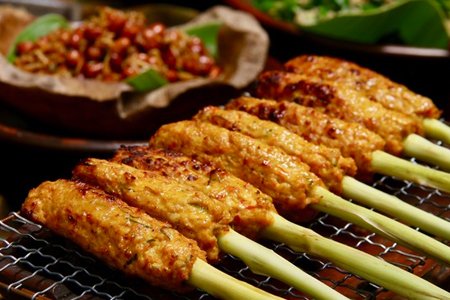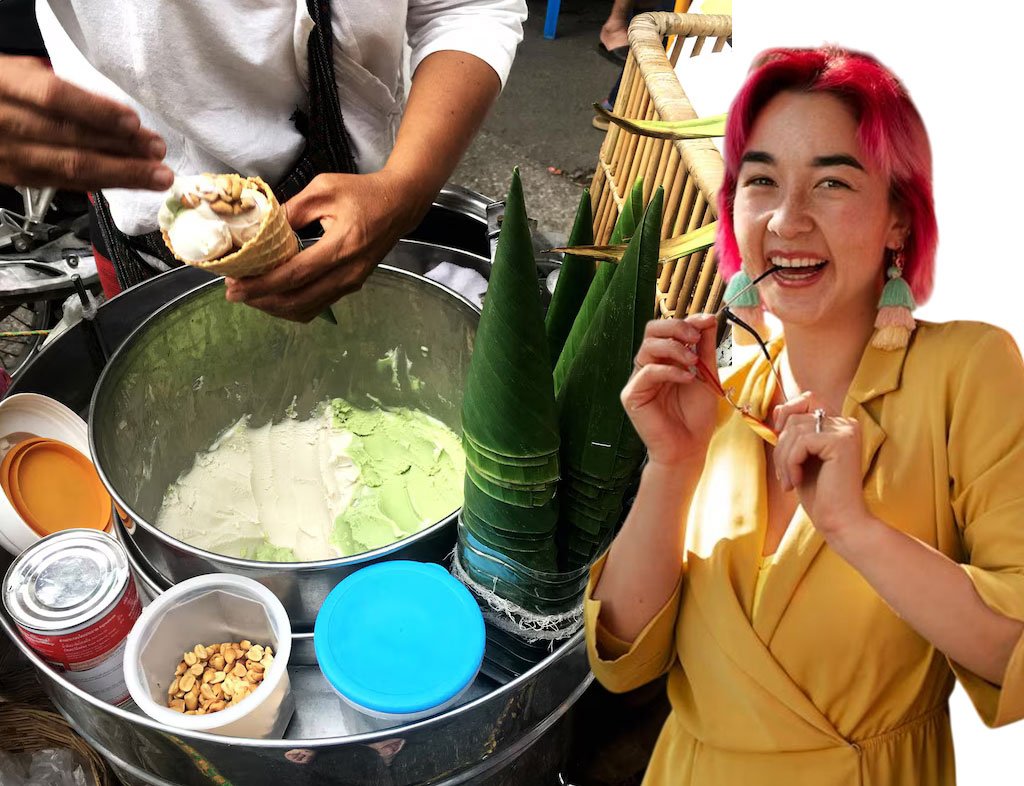Bali street food safety is a crucial topic for every traveler eager to explore the island’s vibrant culinary scene. Bali is famous for its bustling street food culture — from sizzling satay skewers to refreshing tropical drinks. But amid these irresistible flavors and busy food stalls, many tourists overlook the hidden health risks.
Eating street food without proper caution can lead to unpleasant illnesses that might ruin your dream vacation. In this article, we reveal the essential Bali street food safety secret that could save your trip and share practical tips to keep you healthy while enjoying Bali’s delicious local flavors.
The Risks of Eating Street Food in Bali

The risks of eating street food in Bali—be mindful to avoid foodborne illnesses and stomach issues. 🍲⚠️
When it comes to street food in Bali, the biggest concerns are food poisoning and digestive problems. The tropical climate can make food spoil quickly if not stored or prepared properly. Contaminated water, undercooked meats, or unhygienic stalls may cause symptoms like stomach cramps, diarrhea, and vomiting — common signs of foodborne illnesses. These problems can disrupt your vacation plans and even require medical attention.
Moreover, many travelers don’t realize that poor street food hygiene combined with unfamiliar bacteria strains can increase the risk of illness. Understanding these risks is the first step toward safer eating habits during your trip.
The Ultimate Bali Street Food Safety Secret

The ultimate Bali street food safety secret—choose busy stalls with high turnover and freshly cooked food! 🍢✅
So, what is the secret to staying safe while savoring Bali’s street food? It’s simple: choose your food stalls wisely and observe hygiene practices closely.
Here are some insider tips to avoid food poisoning in Bali:
- Pick stalls with high customer turnover. Busy vendors usually have fresher food and better hygiene because they prepare smaller batches more frequently.
- Look for cleanliness. Check if the stall uses gloves or utensils and whether the cooking area is tidy.
- Eat food that’s cooked fresh and served hot. Avoid dishes that have been sitting out for hours.
- Drink bottled or filtered water only. Avoid ice cubes unless you’re sure they’re made from purified water.
- Trust your instincts. If something smells or looks off, skip it.
By applying these simple safety rules, you drastically reduce the chances of falling sick and maximize your enjoyment of Bali’s street food scene.
Safe and Unsafe Bali Street Food to Try

Stick to freshly cooked dishes like satay and nasi goreng, and avoid raw or unrefrigerated items like salads or dairy treats. 🍢✅🥗⚠️
While Bali offers a wide range of tasty street food, some options are safer than others:
Safe Choices:
Sate Lilit (minced fish satay): Usually grilled fresh, making it a safer pick.

A Balinese favorite—this minced fish satay wrapped around lemongrass sticks is delicious and usually safe when served hot and freshly grilled! 🍢🔥✅
Nasi Goreng (fried rice): Cooked on the spot and served hot.

Nasi Goreng (Fried Rice) A classic and generally safe choice—just make sure it’s served hot and cooked fresh to avoid any foodborne risks! 🍚🔥✅
Bakso (meatball soup): Served steaming hot with broth.

Bakso is delicious, but make sure it’s served hot from a clean, busy stall to stay safe. 🍜⚠️
Fresh fruit juices: Made from fresh, peeled fruits (but confirm the water source).

Fresh fruit juices in Bali can be refreshing, but choose clean stalls and avoid added ice to stay safe. 🍹⚠️🌴
Foods to Approach with Caution:
- Raw salads or uncooked vegetables: Might have been washed with unsafe water.
- Seafood from questionable vendors: Riskier due to spoilage.
- Cold desserts or ice creams sold by street vendors: Often made with non-purified water or stored improperly.
Extra Tips for Bali Travel Health
Beyond food safety, keep these tips in mind for a healthy Bali vacation:
- Stay hydrated. The tropical heat can cause dehydration quickly, so drink plenty of bottled water.
- Protect yourself from the sun. Use sunscreen and wear a hat to avoid sunburn.
- Practice good hand hygiene. Carry hand sanitizer for times when soap and water aren’t available.
- Rest well and avoid overexertion. Your immune system works best when you’re well-rested.
Enjoy Bali Street Food Safely and Fully
Bali’s street food offers a rich cultural experience and unforgettable flavors. By knowing the Bali street food safety secret—choosing clean, busy stalls and eating freshly cooked food—you can avoid food poisoning and other health issues. Combine this with smart travel health habits, and your Bali vacation will be as delicious as it is safe.
Ready to indulge in Bali’s street food with confidence? Follow these tips, and your taste buds — and your health — will thank you!
















